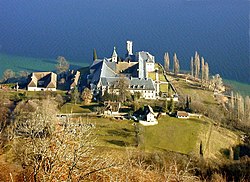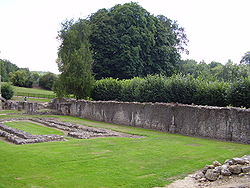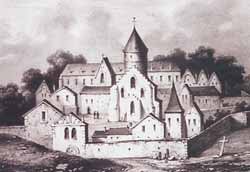
The following is a list of Cistercian monasteries in France, including current and former Cistercian abbeys, and a few priories, on the current territory of France, for both monks and nuns.
Contents
These religious houses have belonged, at different times, to various congregations or groups within the Cistercian order, among which the most important, for the French monasteries, are:
- the Cistercians of the Common Observance, including the Cistercian Congregation of the Immaculate Conception;
- the Congregation of the Feuillants (1592–1791) (the Feuillants and Feuillantines)
- the Trappists (Cistercians of the Strict Observance, otherwise known as the Reformed Cistercians)
- the Bernardine Cistercians of Esquermes
Many of these monasteries during the course of their existence have been both Cistercian and Benedictine: see also List of Benedictine monasteries in France.
The dates in brackets are those of the beginning and the end of a monastery's status as a Cistercian house, which may be different from its dates of foundation and suppression.
The names of currently active Cistercian abbeys and independent priories are in bold. Apart from a very few unusually significant ones, dependent priories no longer operational are not usually listed.




















